#calyptra moth
Note
Vampire moth, please!! They drink blood from vertebrates.
Moth Of The Day #136
Vampire Moth
Calyptra thalictri
From the erebidae family. They have a wingspan of 40-45 mm. They tend to inhabit herb-rich and mosaic-like areas with steppe-like grasslands, rock fragments and sparse forests. They can be found in China, Korea, Japan, Malaysia and Southern Europe. This the most common species of the calyptra genus, which are all referred to as vampire moths, due to their ability to drink the blood of vertebraes, including humans.
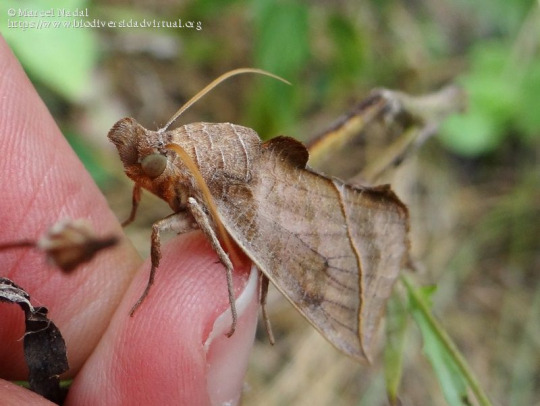

#moth#moths#lepidopterology#lepidoptera#pretty moth#nature#insect#bugs#moth of the day#motd#pretty moths#bug#insects#vampire moth#calyptra moth#calyptra thalictri#erebidae#erebidae moth#bugblr#lepidoptery#entomology
185 notes
·
View notes
Text
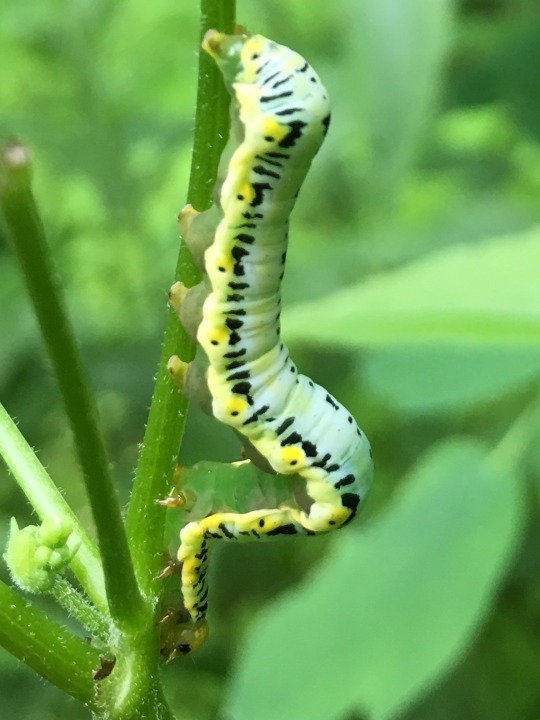
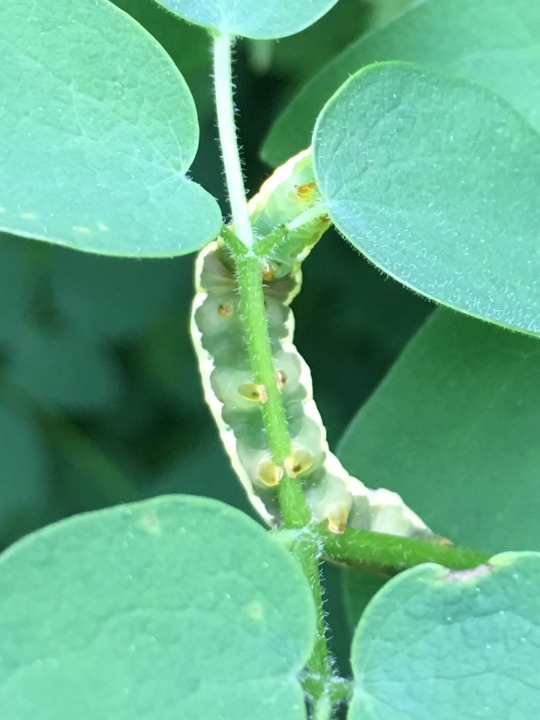
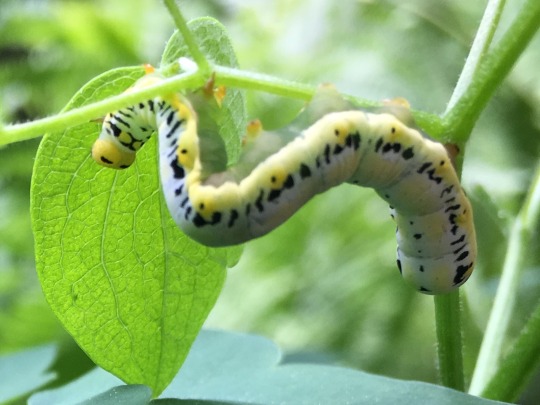
@aleglessoverlookednovemberecho submitted: Found this lovely chub chomping on my meadow rue in northwestern vermont. It ate aaaaaalll the leaves, but the meadow rue still bloomed magnificently a short time later. Yay! ID please?
What a long, precious angel! This sweet friend is a Canadian owlet moth caterpillar, which is in the genus Calyptra and boy, you will never guess what these dudes are up to. The genus is collectively referred to as vampire moths for the adults' habit of drinking the blood of mammals. I have even read anecdotal stories of them sipping from humans. The subfamily they belong to is known as the fruit-piercing moths, so likely the ability to drink blood just evolved from the ability to pierce fruit with their proboscis. Extra nutrients! Can't say no to that. The caterpillars, as you found out, feed on meadow rue.
Here's an adult:
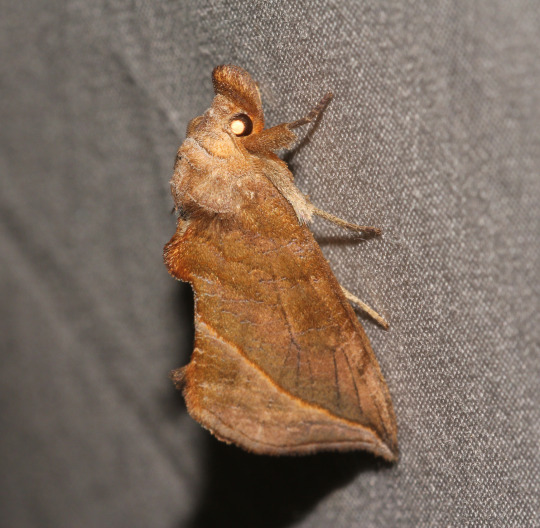
Photo by claudette-cormier
#submission#insects#bugs#animals#moth#vampire moth#Erebidae#fruit pirecing moth#canadian owlet moth#Calyptra#caterpillar#larva
193 notes
·
View notes
Text

Vampire moth - Calyptra thalictri.
Image credit: Ilia Ustyantsev
#ilia ustyantsev#photographer#vampire moth#moth#calyptra thalictri#nature#australia#australian geographic
13 notes
·
View notes
Text
The Vampire Moth: these moths use a specialized proboscis to pierce the skin on pieces of fruit and feed on the juices inside, but some have also been observed using the same tactic to feed on human blood
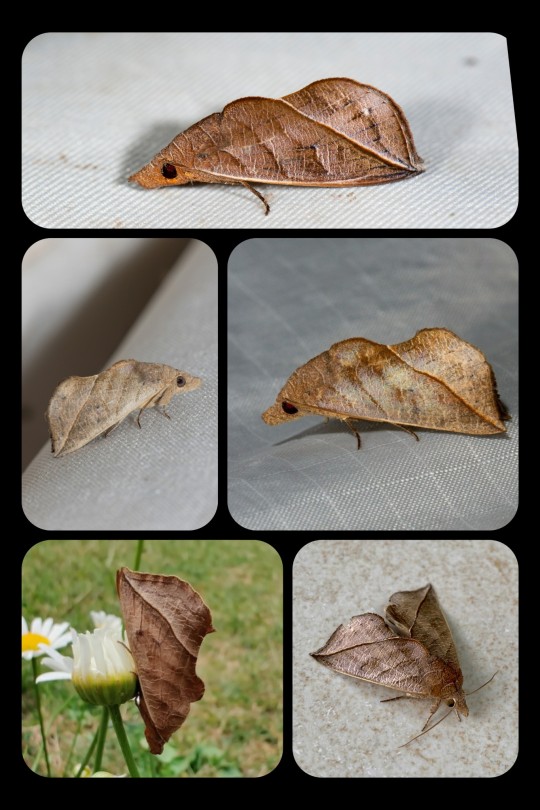
Members of the genus Calyptra are often collectively referred to as "Vampire Moths." All members of this genus are obligate fruit-piercers, meaning that they all subsist primarily on fruit, and they must use their proboscis to pierce through the skin -- but 10 species of Calyptra (out of 18 species in total) have also been documented using the same technique to feed on the blood of living vertebrates, and some are even known to feed on humans.
Blood-feeding (i.e. hematophagy) seems to occur only among the adult males. In various cases, vampire moths have been known to feed on the blood of pigs, antelope, water buffalo, deer, tapir, cattle, elephants, and humans (among other things). Before it can feed, the moth must press its proboscis against the surface of the skin and then oscillate its head back and forth until it is able to pierce through the skin.
Then, according to an article in Entomology Today:
As blood from the host animal wells up, it opens hooks on the sides of the proboscis to anchor it firmly. The proboscis has two parts that alternate between anchoring and drilling through host tissue using an “antiparalell” movement. A bite from a Calyptra moth is red and sore, but is believed to pose no danger to human beings. A vampire moth can suck blood for up to 50 minutes.
Calyptra is a widely distributed genus, with species appearing on most continents, but blood-feeding only seems to occur within the Calyptra populations in South/Southeast Asia and North/Eastern Russia. Some species have been known to feed on blood within certain parts of their geographical range, while feeding only on fruit throughout the rest of their habitat. It's widely speculated that differences in elevation, precipitation, and/or other macroclimate conditions may have an effect on those behaviors.
The biological purpose of blood-feeding among vampire moths is not known, but many scientists theorize that it may allow the males to supplement their salt intake in order to produce healthier offspring.
Calyptra moths are also excellent leaf mimics; their wings are patterned/textured much like dry leaves, enabling them to remain camouflaged when their wings are folded.
Sources/More Info
Purdue University: Investigations of the Vampire Moth Genus Calyptra (PDF)
Entomological Society of America: Geographic Distribution and Differential Feeding Behaviors of the Fruit-Piercing and Skin-Piercing Moth, Calyptra thalictri
Science Direct: Wound-Feeding and Skin-Piercing Moths
Entomology Today: Vampire Moths Suck the Blood of Vertebrates, Including Humans
The Daily Garden: Vampire Moths
Images: [1] C. orthograpta [2] C. minuticornis [3] C. minuticornis [4] C. thalictri [5] C. minuticornis
#entomology#insects#moths#lepidoptera#calyptra#vampire moths#cute moth#nature is weird#just take my blood#you adorable little weirdo
63 notes
·
View notes
Note
what is your favourite bug?
God, that's a tough one because I love so many. I can definitely say my favourite group of bugs is moths. I even once had a job where I was the curatorial assistant of Lepidoptera at a museum for 2 years.
As for an individual bug...very hard to say, but I do love the Vampire Moth because it looks like he's wearing a little leafy cape:

Note I can't say for sure this is my favourite bug. I could probably name 100 bugs that are my favourite, but I chose this guy because he popped into my head first <3
7 notes
·
View notes
Text
i think maybe theres no way to make mothman scary other than saying he’s part calyptra. bc like yeah glowy eyes in the middle of the night is scary but you’d go up to him and realise he has no mouth or anything. just chillin.
#i guess if he blew up that silver bridge with dynamite thats scary but its#like the equiv of a vampire using none of its powers and just punching someone instead#if that makes sense#like it doesnt matter he's a mothman if he does non-moth shit#he might as well be some bridge hater guy#calyptra are the moths who drink blood btw#with the sharp proboscis
2 notes
·
View notes
Note
what’s your thoughts on vampire?
Vampires in general or a thing called Vampire? Vampires seem pretty cool. A bit cliche in media, especially since they only focus on the same few traits even though there’s actually a lot of extra stuff going on with them that gets tossed to the side, but otherwise. Yea the appeal makes sense lol.
Wouldn’t mind seeing some more really monstrous - but not discount gargolye - vampires again, tho. (Or base them off something else than bats for a twist! Bloodsucking mosquitos are right there, and way more thematically fitting than not-blood-sucking or creepy bats. Though maybe that’s too much nightmare material >u<. Oohhh or owls or moths! Get the whole "active at night“ thing in, and it’d be really fitting for combining it with a bunch of the common vampire traits)
#another anon ask#…I just checked#Theres actually bloodsucking vampire moths#they belong to the genus Calyptra#and they’re active at night#someone make something out of this please#it seems very cool
0 notes
Text

ARSON 🔥🔥🔥🔥🔥🔥🔥🔥🔥 YAAYYY
anyway i was listening to 2econd 2ight 2eer while drawing this one so that should tell you how my monch characterization is going
version without shading n such:

tweaking his design a lil....... for the funsies........ teehee
wings are based on the venation of calyptra moth wings
#look i listened to that song for the first time Today after finishing the planning doc and....... i'm looking at the lyrics a lil like Hmmmm#anyway. I'm having too much fun GET ME OUT OF HERE#clutching my head in agony over a guy who says two sentences this is so fucking. sad#SIGHS. whatever#clamart#cotl monch#cult of the lamb#monch
47 notes
·
View notes
Note
i have been told that there are some butterflies that eat rotting meat or otherwise flock to carcasses. and i am wondering if you are aware of which specific species? or anymore Unexpected corpse loving beasts
a wide range of butterflies will puddle on various animal waste products, usually urine or dung but carrion is also taken opportunistically. I’m not sure if there’s any particular group more prone to puddling than others.
some Calyptra fruit-piercing moths, however, use their fruit piercing proboscis to collect blood from live mammals! unlike mosquitoes, bloodsucking is performed only by males, who concentrate the nutrients and pass them on to females as a nuptial gift in his sperm packet while mating.
(this is also true of puddling behaviors in butterflies, usually males and sometimes very old females who need the nutrients)
other moths will take their salts from tears, such as those of water buffalo or birds, and I believe butterflies have also been known to do the same to turtles
176 notes
·
View notes
Photo

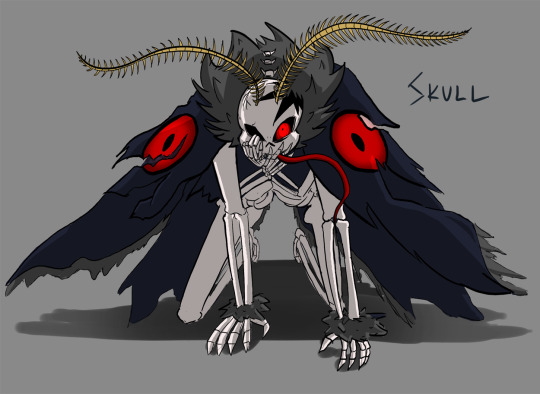
While I really like the Moth AU from @llamagoddessofficial , I wasn’t initially planning to do fan art for it.
Then.......I saw the fan art from @monomori3 and was only able to hold off for a week. So guess what happened to my almost all-nighter last night? Your patience for making those wing patterns on Red is astounding! I don’t know if I would have been able to do the same.
~
So sorry, Llama, I didn’t check to see if you had references. I only saw that AFTER I started coloring, so I just pulled these renditions from my own former part-time entomology assistant knowledge. Males tend to have feathered antennae, so all three have them.
~
Sans: He started my concept for “make the inside of the wings Gaster Blaster face,” but I don’t honestly like his rendition too much. Hence I opted not to color his opened wing drawing.
-Gave him the antennae type that only has the filaments on one side. I thought that would make him seem less threatening because the antennae are important for smell so less would seem like he’s not as good at it.
Red: Probably the one I’m most proud of.
-Changed wings to Sphinx moth shape (sharper, especially when folded).
-Fun fact: He was actually supposed to have the biggest/longest antennae, since that’s a mate attractive quality, but decided to keep to Llama’s canon and keep that for Skull.
Skull: Did a different drawing attempt on him. Was able to color/detail him closest to Llama’s canon.
-Finer antennae segments than Red. Intentionally made them seem more centipede-like rather than “feathery.”
-Eating habits based off the vampire moth type (calyptra moth family). So he has the only piercing proboscis of the three.
611 notes
·
View notes
Text
I've seen a lot of headcanons of mumbo as a Vampire, and now Mumbo as a moth because of thr mothball, so may I suggest: Vampire Moth Mumbo
Vampire Moths, also knows as Calyptra Moths, are a species of moth that do actually only eat fruit, but in an experiment they were offered human hands, and would suck the blood out. Some can suck blood for up to 20 minutes ! I just thought that fit him.
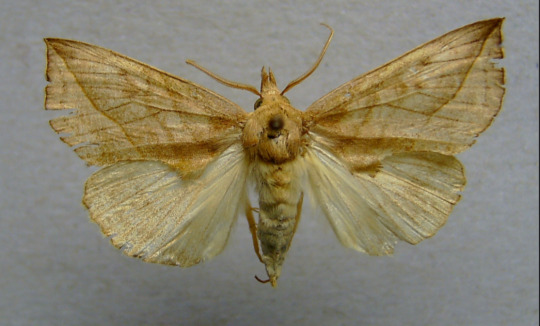
23 notes
·
View notes
Text
New Plot Bunny with Teeth...
I know I've been pretty radio silent for a little while now and the next chapter of Lead to Gold is in the works... I've just been ambushed, tied up and kidnapped by a new plot bunny.
Aside from TheTallTaleTeller's vamp Carlo AU and BLUNTAnonymous' vampire adjacent story... I don't think there are any other vampire stories on ao3 for Lies of P. Now, I'm a sucker for a good vamp story, it's a classic and nearly every fandom needs at least one and I definitely follow the motto 'write what you want to read'.
Well this fangy little plot bunny has me madly writing material for a vampire P fic, (quite AU, no PD etc) which I hope to have the first chapter posted sometime soon.
If you might be interested in Carlo and Romeo finding a very troublesome creature then keep an eye out, I'll note when I start posting here on my blog.
Also, did you know Slavic vampires were able to turn into butterflies, and that male Calyptra moths actually drink the blood of animals including humans? 🤭
13 notes
·
View notes
Note
Ok, if Danny is a luna moth. Is Vlad a cecropia moth?
In the AU specifically, he's a spider! A trap door spider to be exact, but if he was to be a moth? He'd be a Calyptra thalictri, aka Vampire Moth.
But in Luna Moth Danny's au specifically, he's a spider!!
7 notes
·
View notes
Text
Zane
Do you believe me if I say I spent 28 hours on this?
I wanted to test some things (like the scarf turning into flowers) and they turned out well, I think! I finished this the very morning of my week of finals 😭 At 2:30AM actually.
I chose a different kind of moths! When I saw the DTIYS, and since Zane was bleeding and moths were like... drawn to his blood, I thought "wait, I remember species who FEEDS on blood!"
And here I was, drawing vampire moths. I chose the Calyptra bicolor!
And of course, you must know the flowers: red spider lilies... linked to death. :3


Zane and DTIYS belong to @un-dermask.
#undertale#undertale fandom#undermask#undermaskdtiys#undertale au#undertale fan au#undertale universe#undertale fan character#undertale fanart#undertale drawings
10 notes
·
View notes
Text
The Buff-Tip Moth: the resting posture, shape, and color/pattern of the buff-tip moth allows it to mimic a broken birch twig; the moth's buff-colored head and the patches on its hindwings even resemble freshly-snapped wood

It also definitely tends to look like there's a weird little smiley face in the setae surrounding the moth's head, which is arguably even more striking but for some reason none of the sources I dug up on this species seem to mention that weirdness.

This type of camouflage is generally referred to as a "protective resemblance" -- a form of mimesis in which an animal can avoid being preyed upon by mimicking an inedible/unremarkable aspect of its environment. Many different moths are able to disguise themselves in similar ways, and it is especially common within the family known as Lasiocampidae. Some of the other species that engage in protective resemblance include Gastropacha quercifolia, Gastropacha pardale, Gastropacha populifoli, Euthrix potatori, Euthrix laeta, and Calyptra minuticornis (along with the other members of genus Calyptra). Most of these moths disguise themselves as leaves/foliage.
The buff-tip moth is particularly adept at disguising itself, however, and the fact that it so strongly resembles such a specific object (i.e. not just a dead leaf or a vague piece of foliage -- but a broken twig from a silver birch tree, in particular) makes this disguise seem even more impressive/unique.
This species (Phalera bucephala) can be found throughout the British Isles, mainland Europe, and Asia, with its range extending into Eastern Siberia.

Sources & More Info:
Wildlife Insights: Buff-Tip Moth Identification Guide
ButterflyConservation.org: Buff-Tip Moth
The Wildlife Trusts: Buff-Tip Moth
Wildlife Insight: the Buff-Tip Moth
Moth Identification: P. busephala
Encyclopedia of Life: Global Map of Known Occurrences for P. busephala
Insecta: Phalera bucephala
Lepidoptera and their Ecology: P. busephaloides and P. busephala
Journal of Ecology & Evolution: Strong Foraging Preferences for Ribes alpinum in the Polyphagous Caterpillars of Buff-Tip Moth Phalera bucephala
Dickinson County Conservation Board: Protective Resemblance & other Forms of Mimesis/Mimicry
#lepidoptera#entomology#insects#bugs#buff tip moth#weird bugs#critters#animals#moths#are#wildly#underrated
23K notes
·
View notes
Note
Do you know whether tiger moths can feed as adults? I was looking them up and I noticed the websites I visited would just leave out any information on adult diet (or lack thereof)
there are some moths that do not feed as adults, notably saturniids (giant silk moths & etc), but otherwise all adult moths will generally feed on nectar or sometimes fruit juice. since they're not physically developing anymore as adults and generally just staying alive long enough to mate, they mostly just need sugar water as a fuel source.
also since the topic of moth feeding has been brought up, someone's bound to mention this so yes there are a very few moth species that fed on more unusual substances, such as animal tears and blood:
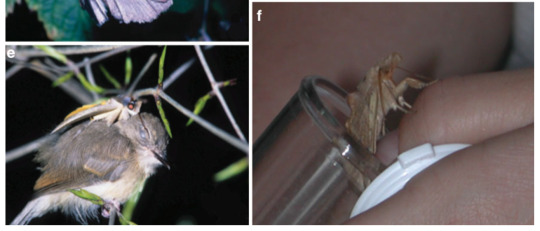
Hemiceratoides hieroglyphica and Calyptra thalictri, both in the Erebidae family (img source, sci-hub mirror)
30 notes
·
View notes